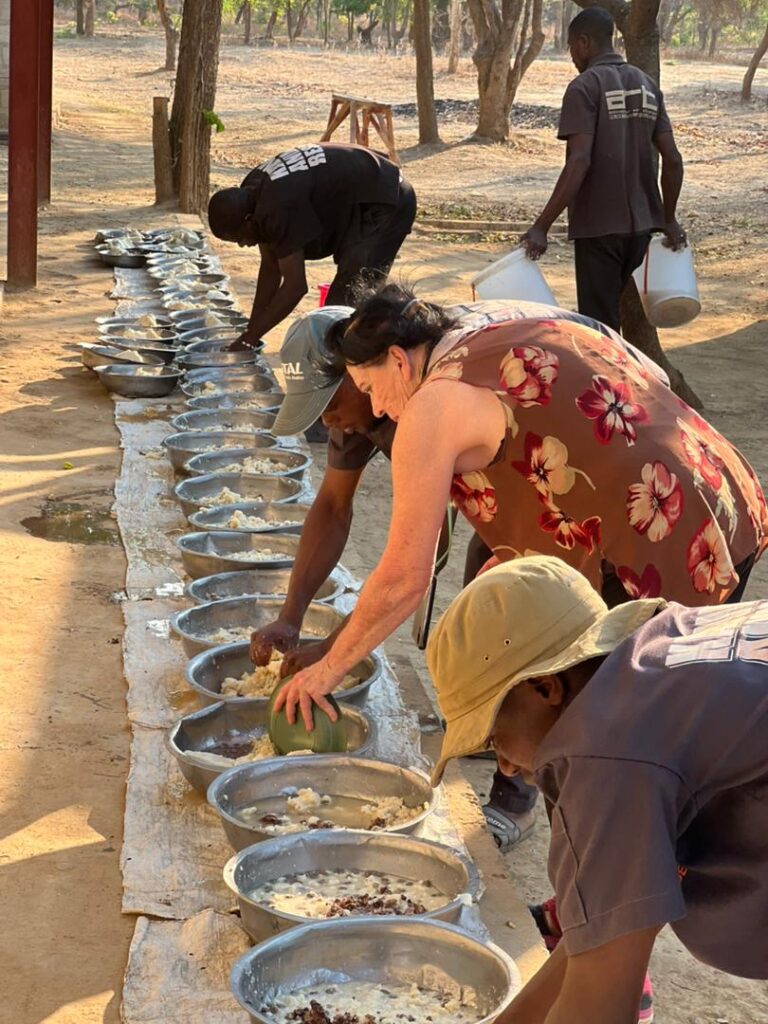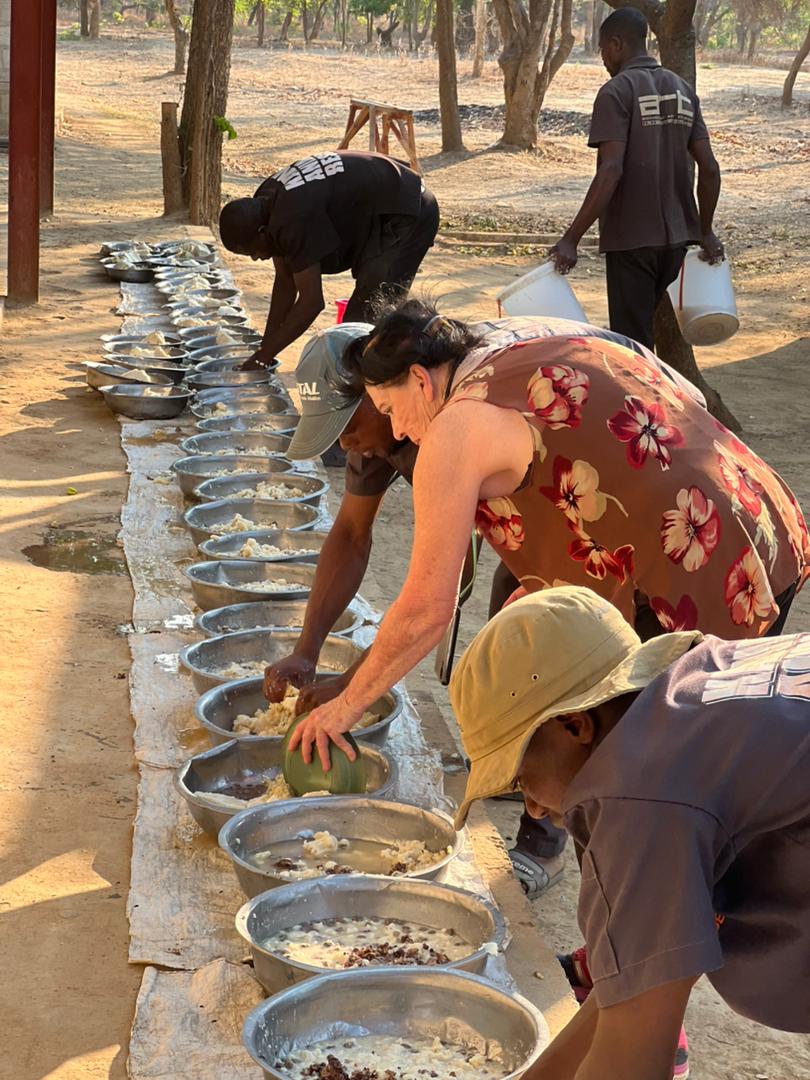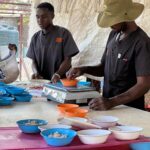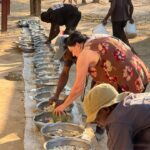Fueling Hope: How Meals are Prepared for the Dogs at Kabwe Animal Rescue
Behind the loving care and rehoming efforts at Kabwe Animal Rescue is a massive, daily logistical challenge: providing nutritious, consistent meals for every dog under their roof. Feeding a large population of rescued animals is a core part of their mission, requiring dedication, efficiency, and tireless effort from the staff and volunteers.
Here is an inside look at how the dogs’ essential meals are prepared:
1. The Daily Kitchen Operation
The feeding routine at Kabwe is a meticulously managed operation. Meals are often prepared twice daily to ensure optimal energy and digestion for the dogs, which range from playful puppies to recovering seniors.
- Mass Cooking: Due to the large number of animals, ingredients are cooked in industrial-sized quantities. The bulk of the meal often consists of a staple carbohydrate like rice or maize meal (nshima), which provides the necessary energy base.
- Protein Integration: The carbohydrate base is fortified with vital protein, which is crucial for muscle development and recovery. This often comes from sources like donated meat, dried fish, mince, or other cost-effective, high-protein supplements, ensuring the diet is more than just filler.
- Supplementation: To address the specific needs of rescued dogs—many of whom arrive malnourished or with health issues—the meals are often mixed with essential vitamins, mineral supplements, and, when available, donated canned food or veterinary-grade ingredients to boost their immune systems and overall health.
2. The Mixing and Serving Line
Once the massive pots of food are cooked, the process moves to distribution, as captured in images of the rescue team at work.
- The Assembly Line: Workers and volunteers line up a long, orderly row of metal feeding bowls—sometimes dozens stretching into the distance. This visual emphasizes the scale of the feeding task.
- Hands-On Preparation: Staff members, like those seen in the photo, move efficiently along the line, scooping and mixing the food directly into each bowl. This hands-on approach ensures that every portion is correctly prepared, has the right consistency, and is ready for the individual dog.
- Quality Control: The food is prepared to be palatable and nutritious. By personally preparing each bowl, the team ensures the consistency is correct—often a soft, hearty mix—making it easy for dogs with dental issues or those recovering from illness to eat.
3. The Role of Donations
The entire process is heavily dependent on the generosity of local and international supporters.
- Funding the Feed: Every scoop of protein and every sack of rice is a direct result of donations. The cost of feeding a rescue population this size is immense, and consistent support is essential to maintain the quality and quantity of the meals.
- Supporting Recovery: For dogs undergoing medical treatment or rehabilitation, specific, higher-grade food may be necessary, and these special diets rely entirely on the rescue’s ability to procure funds or specific food donations.
- The preparation of a meal at Kabwe Animal Rescue is more than just cooking; it is an organized, loving effort to provide hope and nourishment, ensuring every rescued dog has the strength to recover, thrive, and wait for their forever family.




